
Roots
Consider the story of a single strand, a resilient helix stretching from the scalp, carrying whispers of deep time and ancestral lands. This strand, coiled or spiraled, holds within its very structure the saga of human adaptation and the wisdom of generations. Its unique architecture, the foundation of textured hair’s form, speaks not only of biological design but also of a profound cultural inheritance. Understanding what makes textured hair take its shape allows us to see how biology and heritage intertwine, revealing a lineage of resilience, beauty, and ingenious care.

The Follicle’s Ancient Design
The visible beauty of textured hair begins beneath the skin, within the hair follicle . This tiny organ, a miniature factory of keratin, holds the blueprint for each strand’s eventual curve or coil. Unlike the relatively round follicles that produce straight hair, textured hair emerges from follicles that are notably elliptical or flattened in their cross-section.
The more flattened the follicle, the tighter the resulting curl, producing the remarkable range from loose waves to tight coils and intricate zigzags. This intrinsic asymmetry within the follicle guides the hair shaft’s growth path, causing it to twist and turn as it ascends from the scalp.
Early human ancestors, particularly those in equatorial Africa, likely possessed tightly coiled hair. This adaptation, scientists suggest, served as a crucial defense against the intense ultraviolet radiation of the sun. The sparse density of such hair, combined with its spring-like shape, allowed for enhanced circulation of cool air to the scalp.
This natural ventilation helped regulate body temperature for early hominids living on the open savanna. The very form of textured hair, therefore, holds echoes of survival, a biological legacy passed down through countless generations, providing a testament to our ancestors’ ingenuity and adaptability.
Textured hair’s unique architecture, originating in the follicle’s shape, silently recounts a deep history of human adaptation and ancestral survival.

The Hair Shaft’s Inner World and Its Ancestral Echoes
Beyond the follicle, the structure of the hair shaft itself contributes to its distinctive form. Each strand is composed primarily of keratin , a fibrous protein. Within the hair shaft, particularly the cortex, the arrangement of keratin proteins and the distribution of various cell types contribute to the hair’s curl. Textured hair often exhibits an uneven distribution of cortical cells, specifically the ortho-cortex and para-cortex, which grow at different rates, forcing the strand to bend.
Another critical element is the presence of disulfide bonds . These strong chemical bonds form between sulfur atoms in the keratin protein, acting like internal scaffolding that helps maintain the hair’s shape. Textured hair typically possesses a higher density of these disulfide bonds, contributing to its tight coils and unique structure.
While these bonds offer structural integrity, they also create points of potential weakness, making textured hair more susceptible to breakage if not handled with care. This inherent biological characteristic profoundly influenced ancestral hair practices, emphasizing gentle manipulation and protective styles designed to honor the hair’s delicate yet resilient nature.

Understanding the Vocabulary of Hair Forms
Describing textured hair has evolved over time, reflecting both scientific understanding and cultural shifts. Systems of classification, like the widely recognized Andre Walker Hair Typing System, categorize hair into types based on curl pattern, from straight to coily. Type 4 hair, often referred to as Afro-textured, encompasses the tightest coils and zigzags.
However, these systems are modern constructs. Historically, communities described hair not through numerical types but through descriptive terms rooted in observable qualities and cultural significance. These terms, passed through oral traditions, spoke to:
- Coil Size ❉ Referring to the diameter of the curl, from broad spirals to tightly wound springs.
- Density ❉ Acknowledging the visual fullness and abundance of hair, even when individual strands are fine.
- Feel ❉ Describing the tactile experience of hair, often distinguishing between soft, springy strands and those with a more wiry or cottony texture.
- Growth Pattern ❉ Noting how hair emerges and behaves, particularly its tendency to shrink when dry.
This ancestral lexicon, though less formalized, was deeply intertwined with daily life and care practices, shaping how hair was perceived and revered within its cultural context.
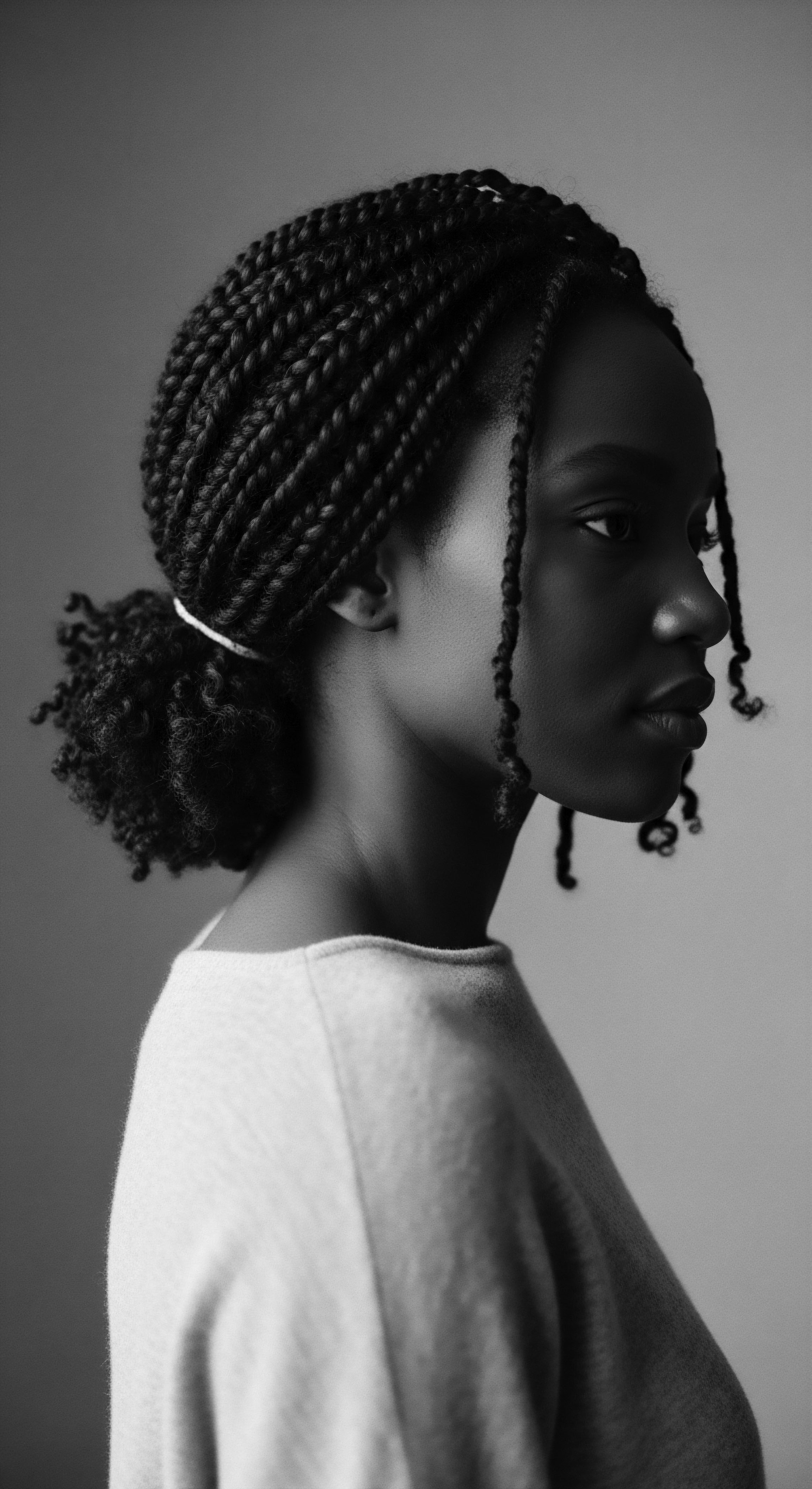
Ritual
The biological foundation of textured hair’s form, with its inherent qualities, gave rise to a legacy of ancestral practices dedicated to its care and styling. These practices were not random acts but deeply informed responses to the hair’s unique needs and its profound cultural significance. The very structure of the hair strand dictated the innovations in tools, the wisdom in techniques, and the communal rhythms of care that have endured through centuries.

Ancestral Roots of Protective Styling
The tightly coiled and often more fragile nature of textured hair, stemming from its elliptical follicles and uneven keratin distribution, made it vulnerable to damage from environmental elements and daily manipulation. This biological reality spurred the development of protective styles , a cornerstone of hair heritage across African communities and among people of African descent. These styles, such as braids, twists, and cornrows, served a dual purpose ❉ they minimized external stress on the hair shaft and preserved precious moisture, which textured hair naturally loses more quickly than straighter hair due to its coiled structure.
In many pre-colonial African societies, intricate hairstyles conveyed social messages regarding age, marital status, tribal affiliation, wealth, and spiritual beliefs. For example, among the Wolof of Senegal or the Yoruba of Nigeria, a person’s hairstyle could tell a story of their life journey. This was not merely aesthetic; it was a societal language, intricately tied to the physical properties of the hair itself, which allowed for such elaborate, long-lasting designs. The ability to hold such complex styles for weeks at a time was a testament to the hair’s coiled nature, yet also underscored the need for these styles to protect the hair from daily wear.
The coiled nature of textured hair, while beautiful, necessitates protective styling, a tradition woven into the fabric of ancestral wisdom and cultural identity.

What Influenced Traditional Hair Tools and Their Evolution?
The specific form of textured hair also shaped the tools developed for its care. Unlike combs designed for straight hair, traditional tools for textured hair were often broad-toothed or pick-like, crafted from wood, bone, or horn. These implements were designed to gently separate and untangle coils without causing excessive breakage. The ingenuity of these tools lay in their deep understanding of the hair’s resistance to smooth gliding, a direct consequence of its many bends and curves.
Consider the period of the Trans-Atlantic slave trade , a dark chapter that saw millions of Africans forcibly removed from their homelands. Stripped of their traditional grooming resources and enduring brutal conditions, enslaved Africans adapted with what was available, often improvising with tools like sheep-fleece carding implements for detangling. This stark reality highlights the enduring biological needs of textured hair and the resilience of a people finding ways to care for their crowns even in the most dehumanizing circumstances. These adapted practices, born of necessity and knowledge of the hair’s inherent nature, became part of a new diasporic hair heritage .
| Historical Tool/Practice Broad-toothed combs (wood, bone) |
| Biological Foundation Addressed The hair's tendency to coil tightly, creating friction points and resistance to detangling, a result of its elliptical cross-section. |
| Modern Parallel/Insight Wide-tooth combs and detangling brushes designed to minimize breakage on wet, coiled strands. |
| Historical Tool/Practice Oiling and greasing rituals (shea butter, plant oils) |
| Biological Foundation Addressed Textured hair's reduced ability for scalp oils to travel down the shaft, leading to dryness due to its curled structure. |
| Modern Parallel/Insight Modern leave-in conditioners and moisturizing creams, emphasizing humectants and emollients. |
| Historical Tool/Practice Protective styling (braids, twists, wraps) |
| Biological Foundation Addressed Fragility at points of curvature and susceptibility to environmental damage (sun, friction). |
| Modern Parallel/Insight Emphasis on low-manipulation styles, heat protection, and reducing mechanical stress. |
| Historical Tool/Practice These practices, across eras, reflect an enduring response to the biological realities of textured hair, transforming necessity into a vibrant cultural heritage of care. |
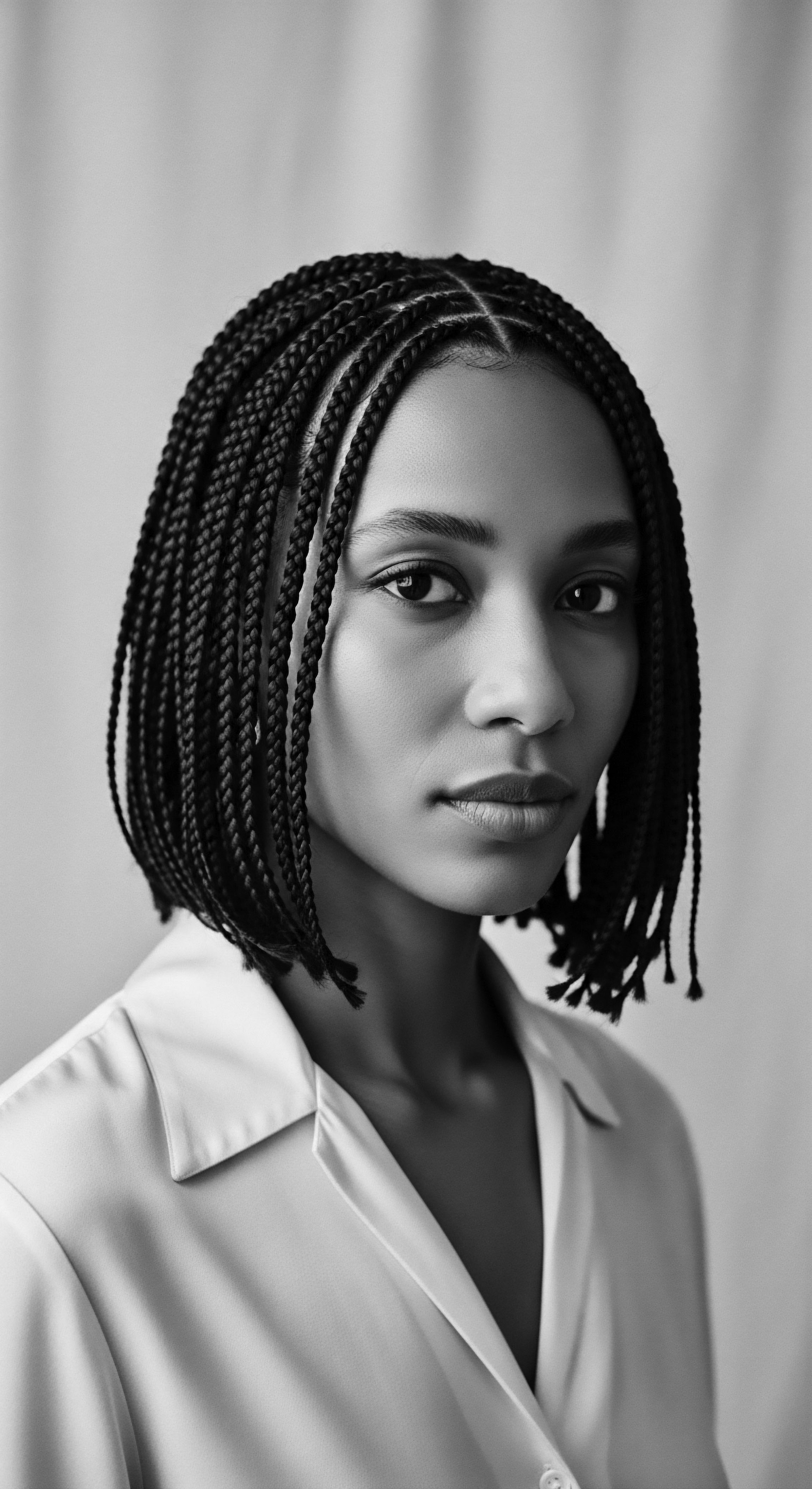
How Did Traditional Styling Methods Acknowledge Hair’s Biological Needs?
The ancestral approach to styling was not just about aesthetics; it was a deeply informed engagement with the hair’s biological properties. Hair was coiled, stretched, or manipulated in ways that respected its natural tendencies and vulnerabilities. The ritual of communal grooming, where women gathered to braid and care for each other’s hair, served as a social bond and a conduit for transmitting this specialized knowledge. This intimate setting allowed for a hands-on understanding of how different tensions, partings, and manipulations affected the hair’s integrity, directly addressing the potential for breakage that is a biological characteristic of tightly curled strands.
For example, the widespread use of natural oils and butters like shea butter was a direct response to the hair’s biological propensity for dryness. Textured hair, with its unique follicular shape and lifted cuticle, struggles to retain moisture and distribute natural sebum from the scalp along the entire hair shaft. Ancestral wisdom intuitively understood this, employing topical applications to seal in hydration, provide a protective barrier, and impart a healthy luster. This traditional practice, born from observing the hair’s biological responses to moisture, remains a cornerstone of modern textured hair care.
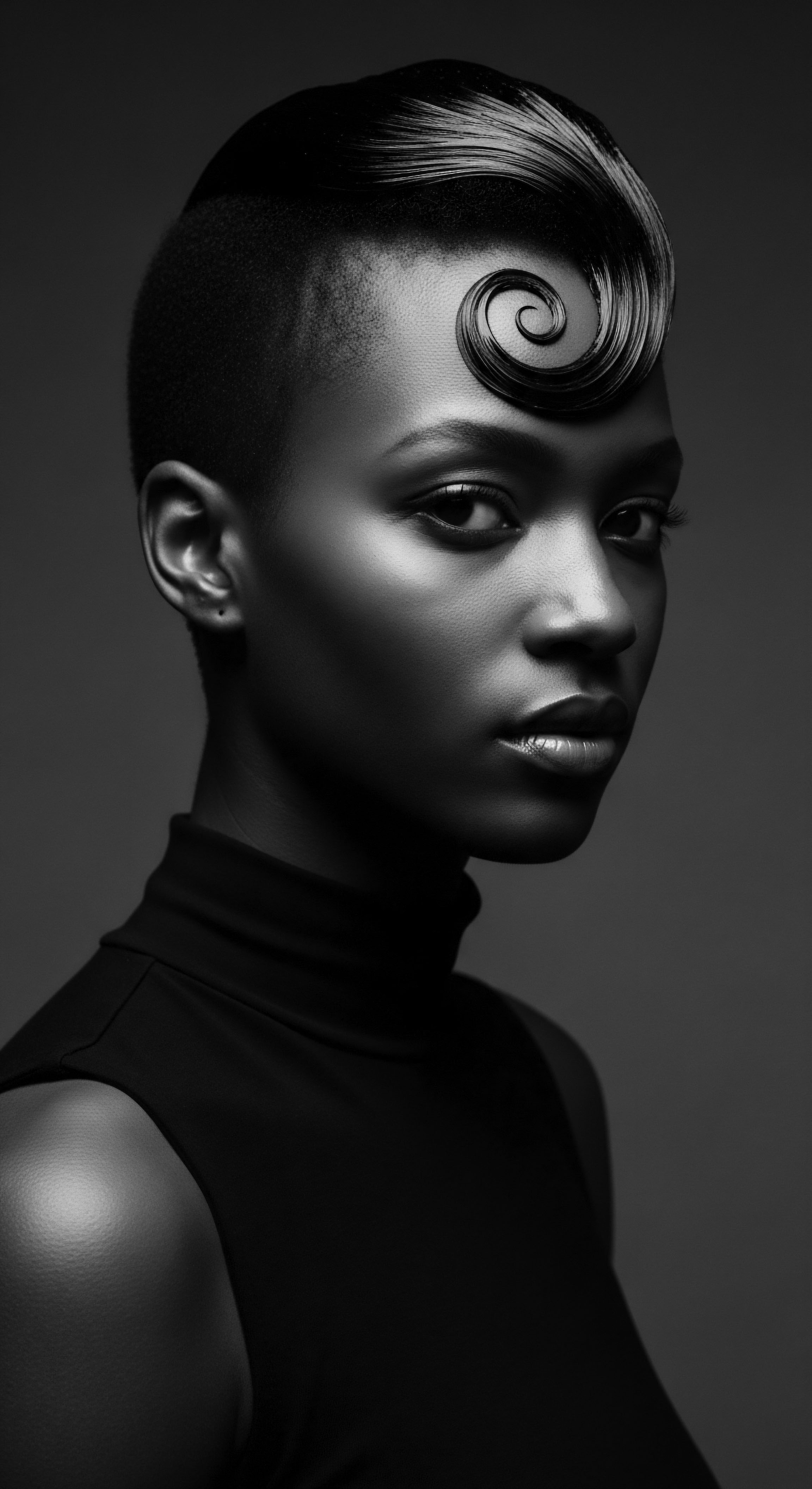
Relay
The dialogue between textured hair’s fundamental biology and its lived heritage stretches across time, bridging ancestral wisdom with contemporary scientific understanding. This dynamic exchange reveals how ancient practices, once guided by observation and communal knowledge, often find validation through modern research, deepening our reverence for the hair’s intricate architecture.

How does Genetics Control Textured Hair’s Form?
The profound variations in textured hair’s form are anchored in our genetic code . Genes act as the master architects, dictating the shape of the hair follicle and influencing the production and arrangement of the keratin proteins that compose each strand. This inheritance explains why hair texture often follows familial lines, though the interplay of multiple genes means even siblings can display a range of textures.
Research has begun to identify specific genes implicated in hair curliness. For example, variations in the TCHH (trichohyalin) gene are associated with differences in hair texture across populations, playing a role in the hair shaft’s development and providing mechanical strength. Other genes, such as EDAR and FGFR2, have also been linked to hair thickness and texture, particularly in certain populations.
The science of epigenetics also suggests that environmental factors, beyond the genetic blueprint, can influence gene expression over time, adding another layer of complexity to the hair’s characteristics throughout a lifetime. This scientific lens allows us to see the deep ancestral connections, where adaptations to diverse environments shaped the genetic predispositions for the textures we behold today.
Genetic blueprints, shaped by millennia of adaptation, orchestrate the precise biological mechanisms that give rise to textured hair’s diverse forms.

The Microscopic Landscape ❉ Cuticle and Cortex
Delving deeper into the microscopic world of the hair shaft reveals further insights into textured hair’s form and behavior. The outermost layer, the cuticle , consists of overlapping, scale-like cells that protect the hair’s inner structures. In textured hair, these cuticle scales tend to be more lifted or imbricated compared to straight hair, which means they do not lie as flat.
This configuration, while a natural part of its design, contributes to faster moisture loss and can increase the hair’s susceptibility to friction and damage. This biological reality underpins the historic emphasis on moisturizing and protective styling within textured hair heritage .
Beneath the cuticle lies the cortex , the hair’s most substantial component, where the majority of its strength and elasticity resides. The cortex is composed of bundles of keratin proteins, and the way these proteins are packed and cross-linked varies in textured hair. The frequent bends and twists along a coiled strand mean that protein packing can be less uniform, creating areas that are intrinsically more prone to breakage.
Furthermore, textured hair exhibits a higher density of disulfide bonds within its cortical structure, which contribute to its tight curl but also make it less resistant to mechanical stretching. Understanding these intricate details at the molecular level allows for a deeper appreciation of why ancestral care rituals prioritized gentleness and consistent hydration.
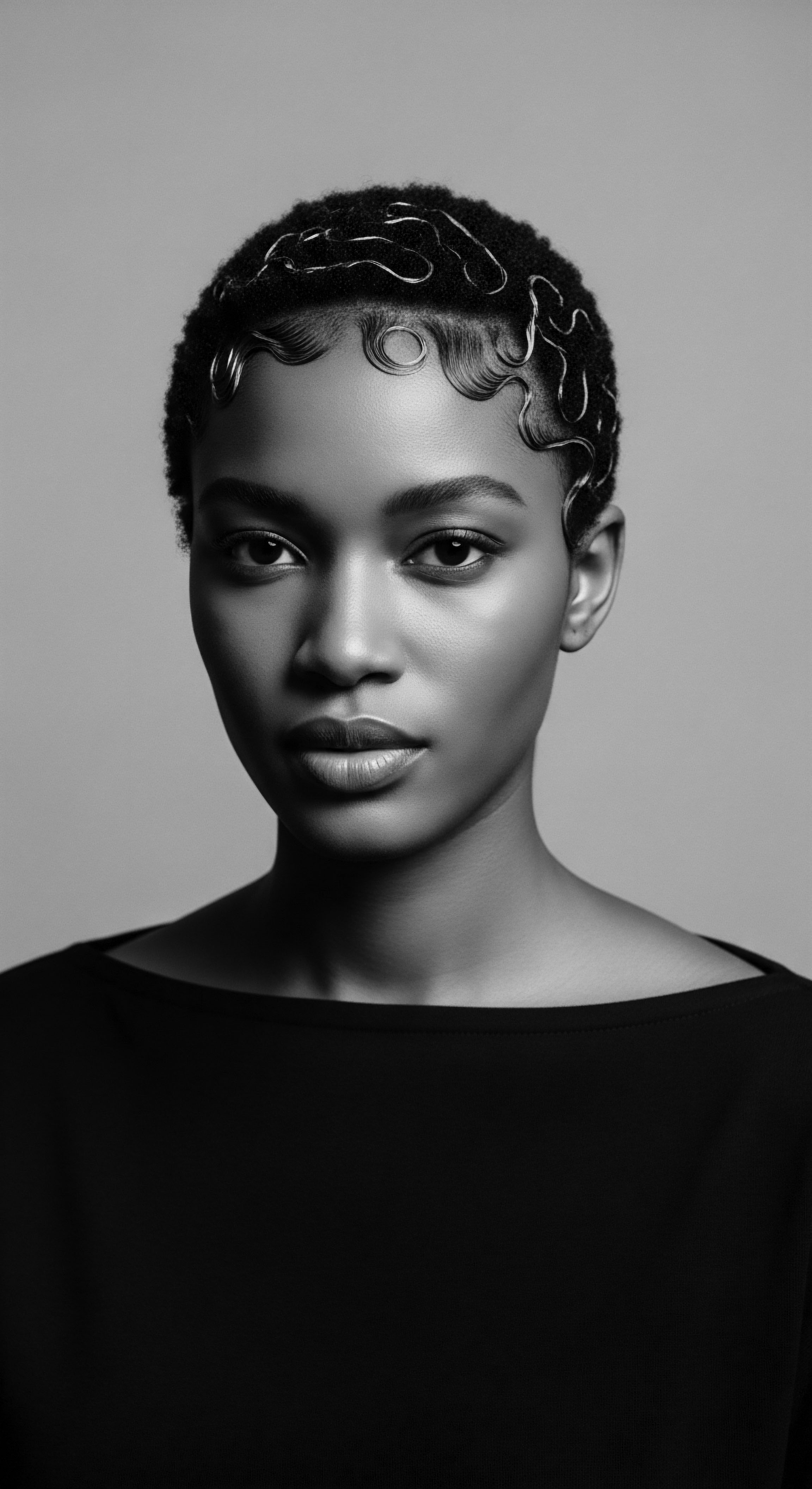
Connecting Ancestral Knowledge to Modern Biochemistry
The resilience of ancestral hair care practices is increasingly validated by contemporary biochemical understanding. For centuries, diverse African communities relied on natural ingredients from their local environments for hair health. For instance, the use of plants like Ziziphus spina-christi (Christ’s thorn jujube) as a cleansing agent, or the application of plant oils and butters for moisture, were commonplace.
Modern science now helps explain the efficacy of these traditions. Many traditional ingredients, such as shea butter, are rich in fatty acids and vitamins that provide crucial lipids to the hair, compensating for the natural difficulty of sebum distribution along a coiled strand. These lipids help seal the cuticle, reducing moisture evaporation and improving elasticity, a direct biological benefit to textured hair.
The ethnobotanical studies emerging from regions like Ethiopia and Nigeria catalog a wealth of plants used for hair and skin care, many of which are now being studied for their pharmacological properties, including those that support hair growth or have anti-inflammatory effects on the scalp. This convergence of ancient wisdom and modern inquiry truly speaks to the enduring legacy of textured hair heritage , where solutions were often found not in labs but in the very earth that sustained our forebears.
Traditional approaches to care, such as the Sunday wash day ritual in many Black households, involved meticulous detangling, often with water and natural emollients, followed by braiding or twisting for protection. This multi-step process, passed down through generations, directly addresses the biological challenges of textured hair:
- Hydration ❉ Water softens the hair, making detangling gentler.
- Lubrication ❉ Oils and balms reduce friction, protecting the fragile cuticle during manipulation.
- Protection ❉ Braiding minimizes daily handling and environmental exposure, allowing the hair to rest and retain length.
Such rituals are not simply routines; they are living testaments to an ancestral understanding of the hair’s biological needs, refined and passed on as a precious inheritance.
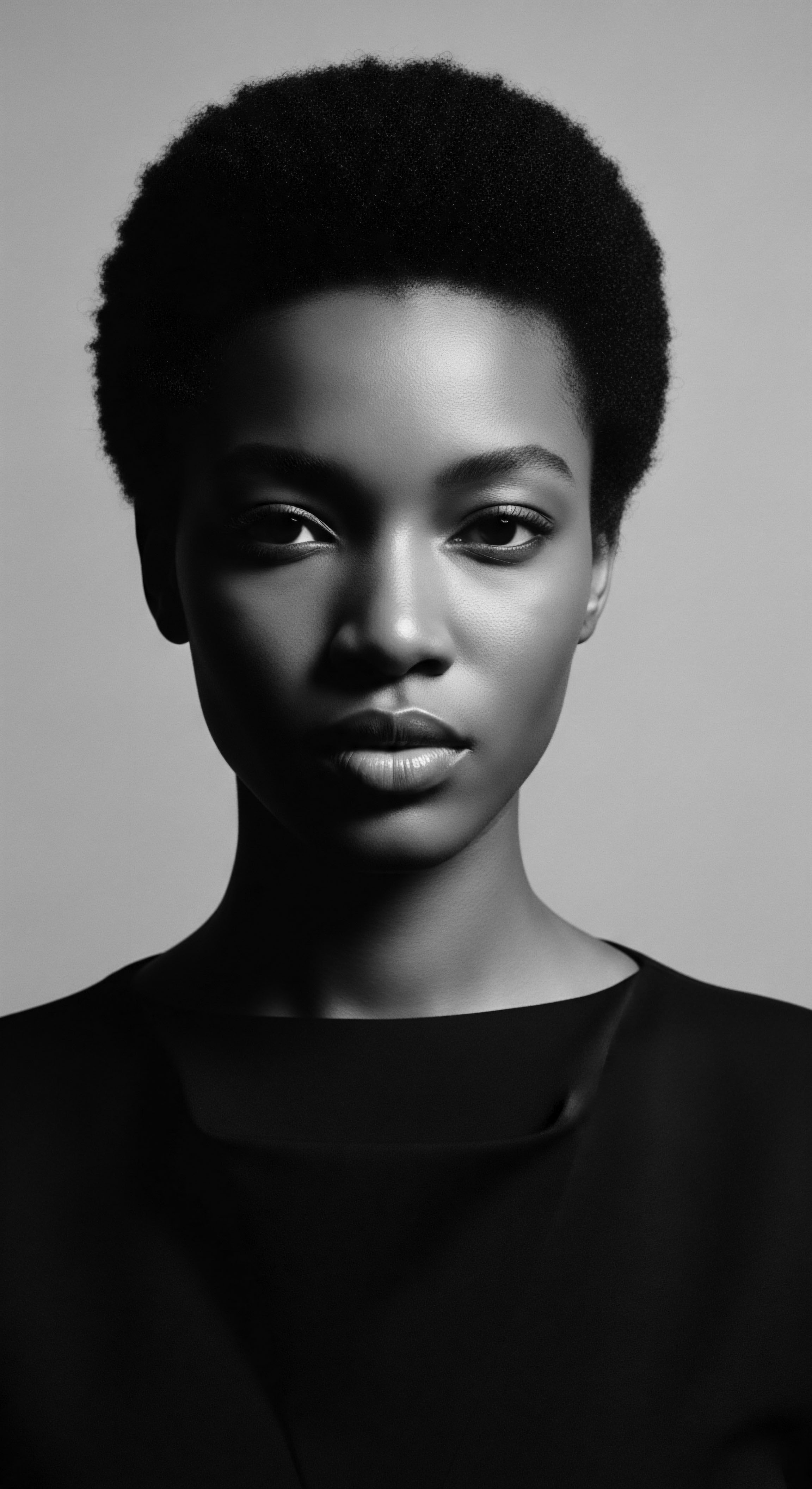
Reflection
The journey into textured hair’s biological foundation is a journey into the heart of heritage . Each coil, each curve, each tightly wound strand tells a story not just of cells and proteins, but of survival, identity, and profound cultural continuity. The hair on our heads stands as a living archive, bearing witness to the adaptive genius of our ancestors and the enduring practices that sustained them. From the sun-kissed plains where hair offered vital thermoregulation to the intimate spaces where hands carefully braided and oiled, the biological reality of textured hair has always been inextricably linked to the human experience.
This inherent form has shaped not only how we care for our hair but also how we see ourselves. It has been a symbol of resilience through adversity, a canvas for self-expression, and a powerful statement of belonging. The ‘Soul of a Strand’ ethos reminds us that hair is more than adornment; it is a sacred connection to those who came before us, a tangible link to ancestral wisdom.
As we continue to understand its scientific complexities, we do so with a deeper appreciation for the ancient knowledge that long ago recognized its unique needs and celebrated its innate beauty. Our textured hair, in all its varied forms, remains a vibrant testament to a living, breathing heritage , forever unfolding its story with every twist and turn.

References
- Caffrey, C. (2023). Afro-textured hair. EBSCO Research Starters.
- Dawber, R. P. R. (1997). Hair and scalp diseases. Blackwell Science.
- Franbourg, A. Hallegot, P. Baltenneck, F. Toutain, C. & Leroy, F. (2003). Current research on ethnic hair. Journal of the American Academy of Dermatology, 48(6), S115-S119.
- Jablonski, N. G. (2014). The biology of human skin. CRC press.
- Leslie, G. (2014). Braids & Afros ❉ The African American Guide to Beautiful Hair.
- Oh, Y. (1999). The Biology of Hair.
- Robbins, C. R. (2012). Chemical and physical behavior of human hair. Springer Science & Business Media.
- Wu, M. et al. (2024). The Genomic Variation in Textured Hair ❉ Implications in Developing a Holistic Hair Care Routine. Cosmetics, 11(8).
